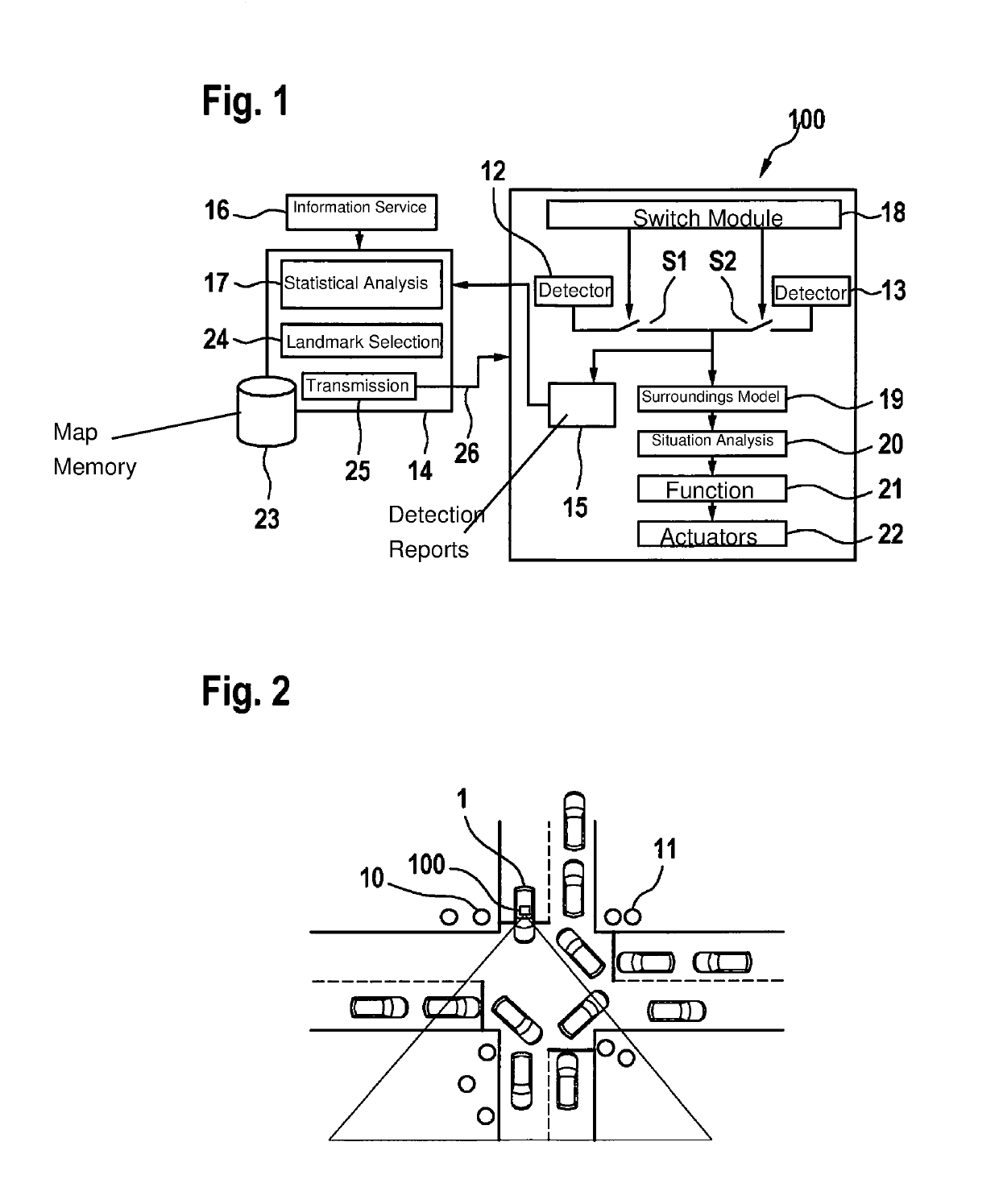Method for determining a pose of an at least semi-autonomously driving vehicle with the aid of landmarks that are specifically selected and transmitted from a back-end server
a technology of at least semi-autonomous driving and landmarks, applied in the direction of navigation instruments, instruments, image enhancement, etc., can solve the problems of putting an unnecessary strain on the capacity of an available bandwidth of the communication channel, unable to reliably model the surroundings under all lighting conditions, and no longer sufficien
- Summary
- Abstract
- Description
- Claims
- Application Information
AI Technical Summary
Benefits of technology
Problems solved by technology
Method used
Image
Examples
Embodiment Construction
[0027]FIG. 1 shows a vehicle control system 100, including a detailed depiction of individual components. Also depicted is a back-end server 14 for receiving detection reports 15 from vehicle control system 100 and for communicating landmark data to vehicle control system 100 with the aid of a communication channel.
[0028]Vehicle control system 100 includes multiple detectors 12 and 13, merely two detectors 12, 13 being shown by way of example. With a module 18, it is possible to switch on, switch off or switch over detectors 12, 13 with the aid of switches S1 or S2, regardless of which type of landmarks 10 or 11 is to be recognized.
[0029]If either detector 12 or detector 13 or both detectors 12 and 13 is or are activated, a surroundings model 19 may be ascertained so that following a situation analysis 20, a function 21 may finally be provided, with which an action for guiding vehicle 1 is output using a system of actuators 22.
[0030]Also schematically shown, in addition to vehicle c...
PUM
 Login to View More
Login to View More Abstract
Description
Claims
Application Information
 Login to View More
Login to View More - R&D
- Intellectual Property
- Life Sciences
- Materials
- Tech Scout
- Unparalleled Data Quality
- Higher Quality Content
- 60% Fewer Hallucinations
Browse by: Latest US Patents, China's latest patents, Technical Efficacy Thesaurus, Application Domain, Technology Topic, Popular Technical Reports.
© 2025 PatSnap. All rights reserved.Legal|Privacy policy|Modern Slavery Act Transparency Statement|Sitemap|About US| Contact US: help@patsnap.com

